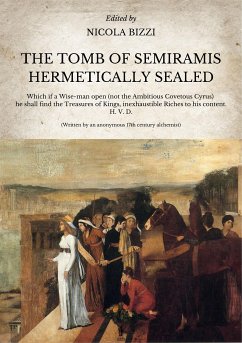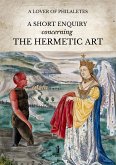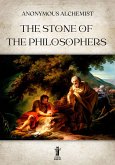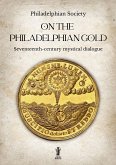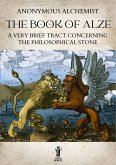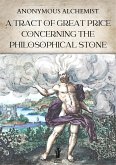The mythical Mesopotamian queen Semiramis, or Šammīrām (Shammuramat in Akkadian), mentioned by various ancient sources as the wife of the equally mythicized King Ninus, eponymous founder of the city of Nineveh and of the first Assyrian empire, is the protagonist of an unusual alchemical text of the seventeenth century.
The Tomb of Semiramis have first been published in Latin in 1674 and shortly after in English printed in London by William Cooper (included in William Cooper’s alchemical compendium Collectanea Chymica, London 1683) and then translated into Dutch and printed as Eenige philosophische en medicinale tractaatjes in Amsterdam in 1688.
Latin versions of the text were included in Miscellanea Curiosa Acadamiae Naturae Curiosorum, (Frankfurt, 1678), Manget’s Compendium, (Geneva, 1702), and issued under the name Abderita Democritus, De Rebus Sacris Naturalibus et Mysticis (Nurnberg, 1717).
A short but very interesting work, The Tomb of Semiramis provides equal parts theory and practice with regards to Alchemy and, unlike many works, specifically cites other alchemists and philosophers (Avicen, Paracelsus, Johannes Pontanus, Joachimus Poleman, etc.) within its content to prove its veracity.
In the opinion of many experts and scholars, this anonymous treatise follows some aspects of A Work of Saturn by Johann Isaac Hollandus Hollandus (first published in London in 1670) in its treatment of the use of the Philosopher’s Stone.
The unknow author, surely a 17th century alchimist and initiate, claims to reveal the secrets of the physical work of the Philosophers Stone, however, though it stays close to its theme it uses metaphorical and philosophical allusions to the process, rather than approaching it directly in physical terms. He indicates in the preface the reason for the title of his book: «We therefore... do raise this knowledge, buried and obscured under the pretext of the Tomb of the most wise Semiramis, formerly Queen of Babylon...».
The Tomb of Semiramis have first been published in Latin in 1674 and shortly after in English printed in London by William Cooper (included in William Cooper’s alchemical compendium Collectanea Chymica, London 1683) and then translated into Dutch and printed as Eenige philosophische en medicinale tractaatjes in Amsterdam in 1688.
Latin versions of the text were included in Miscellanea Curiosa Acadamiae Naturae Curiosorum, (Frankfurt, 1678), Manget’s Compendium, (Geneva, 1702), and issued under the name Abderita Democritus, De Rebus Sacris Naturalibus et Mysticis (Nurnberg, 1717).
A short but very interesting work, The Tomb of Semiramis provides equal parts theory and practice with regards to Alchemy and, unlike many works, specifically cites other alchemists and philosophers (Avicen, Paracelsus, Johannes Pontanus, Joachimus Poleman, etc.) within its content to prove its veracity.
In the opinion of many experts and scholars, this anonymous treatise follows some aspects of A Work of Saturn by Johann Isaac Hollandus Hollandus (first published in London in 1670) in its treatment of the use of the Philosopher’s Stone.
The unknow author, surely a 17th century alchimist and initiate, claims to reveal the secrets of the physical work of the Philosophers Stone, however, though it stays close to its theme it uses metaphorical and philosophical allusions to the process, rather than approaching it directly in physical terms. He indicates in the preface the reason for the title of his book: «We therefore... do raise this knowledge, buried and obscured under the pretext of the Tomb of the most wise Semiramis, formerly Queen of Babylon...».

